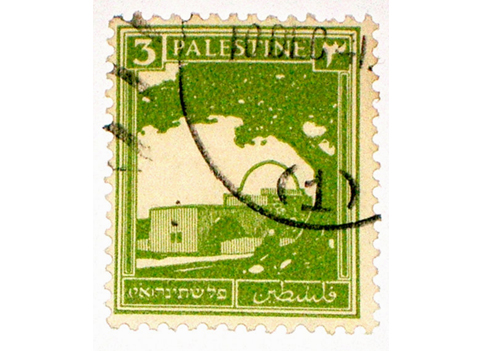Grass stains on Canada’s hands
- JNF and Canada Park in the West Bank

- Jesse Rosenfeld, Toronto Now December 20, 2007.
Why are feds subsidizing the refurbishment of a park built on razed Palestinian towns?
Ramallah, Palestine: It‚s easy to forget, while soaking up the tranquillity along with happy picnickers under the pine trees, that Canada Park is steeped in a disturbing controversy.
The fact is, the Park in the Latrun Valley sits on the occupied West Bank on the site of two Palestinian villages, Imwas and Yalu, destroyed by Israel in the 1967 war. The two were located just off the Jerusalem-Tel Aviv highway.
The green space also known as Ayalon and established in 1973 through donations to the Jewish National Fund of Canada, is currently the focus of a renewed JNF fund drive.
It‚s also at the centre of activist efforts by both Palestinian and Jewish human rights groups eager to share this terrain‚s obscured history with the Israeli public.
Next month the independent Palestinian rights organization Al-Haq officially releases a report on Canada Park placing the onus for violating international law on Israel, JNF Canada and the Canadian government.
The document, which was shown to former villagers on December 3, combines their affidavits as well as the recorded depositions and writings of Israeli soldiers serving during the displacement with maps, photos and legal analyses.
One of those giving testimony was Al-Haq activist Ahmad Abu Gaush, a refugee from Imwas and a participant in the Imwas Village Committee, which presses for the right of villagers to return.
Sitting in a Ramallah coffee shop, he describes the terror and confusion of the early hours of June 5, 1967.
“My family left an hour before the soldiers reached us,” he says. “We walked through the mountains for 32 kilometres with no food or water until we reached Ramallah.” As we look at photos of Imwas before its destruction, he reminisces about the calm beauty of the village and his feeling that his childhood was stolen.
West Bank Palestinians, he says, were able to visit the area until 1991, but after the first Gulf War the Israeli military erected a checkpoint, barring displaced villagers.
Now, with the construction of the wall, which encompasses the park, access is even more impaired.
“When returning to the park, I had mixed feelings. It‚s very hard standing on the ruins of where you used to live while seeing people enjoying themselves,” he says.
John Reynolds, a legal researcher with Al-Haq, says, “The forcible transfer of people from their villages and the destruction of those villages are defined as a grave breach of the Geneva Convention in the category of war crimes.‚”
The state of Israel, he says, bears the primary responsibility, but as a charitable organization the onus is also on the JNF. But Reynolds fingers the Canadian government as well, because the money to build Canada Park was subsidized by tax exemptions.
While the maps of pre- and post-1967 Israel indicate otherwise, the JNF has argued that the park is in 1948 Israel. Joe Rabinovitch, the organization‚s national director, speaking from Montreal, says Al-Haq‚s claims about rights violations “are ludicrous and have no foundational basis in law.”
The villages were destroyed, he says, for security reasons. “There were Palestinians lobbing shells onto the Jerusalem-Tel Aviv highway.”
Walking around the park, the only visible signs of previous inhabitants are a crumbling cemetery with stones engraved in Arabic and a series of old village walls.
Some of these near the park entrance bear rows of plaques to Canadian donors – the city of Ottawa, the Metropolitan Toronto Police Department, former Ontario premier Bill Davis and Toronto city councillor Joe Pantalone.
(Pantalone, speaking from Toronto, says he wasn‚t aware when the donation was made that the park might have crossed Israel‚s borders. “Issues of property compensation will eventually have to be addressed in this situation,” he says, “but we need parkland everywhere.”)
That the green space has no visible signage about the forgotten earlier inhabitants doesn’t surprise Eitan Bronstein of Zochrot, a primarily Jewish-Israeli group that educates the public about Israel’s creation of Palestinian refugees.
“For Israel, it’s better not to show the history, because if you know the history, you have to take responsibility,” he says. In 2005, Zochrot petitioned the High Court of Justice to force the JNF to install signs acknowledging the existence of the villages.
The JNF had posted descriptions of previous eras but failed to mention the Palestinian presence. The High Court ruled in favour of Zochrot, and the JNF was made to install two signs. Both of these have since been vandalized or taken down.
Wandering along the rocky paths, I discover many people have no idea what existed here before — though one resident of a nearby kibbutz acknowledges that some in her community boycott the park because of the location and the evictions. Soon, however, she cuts the conversation short to return to her picnic.
Jesse Rosenfeld is a Canadian freelance journalist based in Ramallah. With files from Dina Awad.


